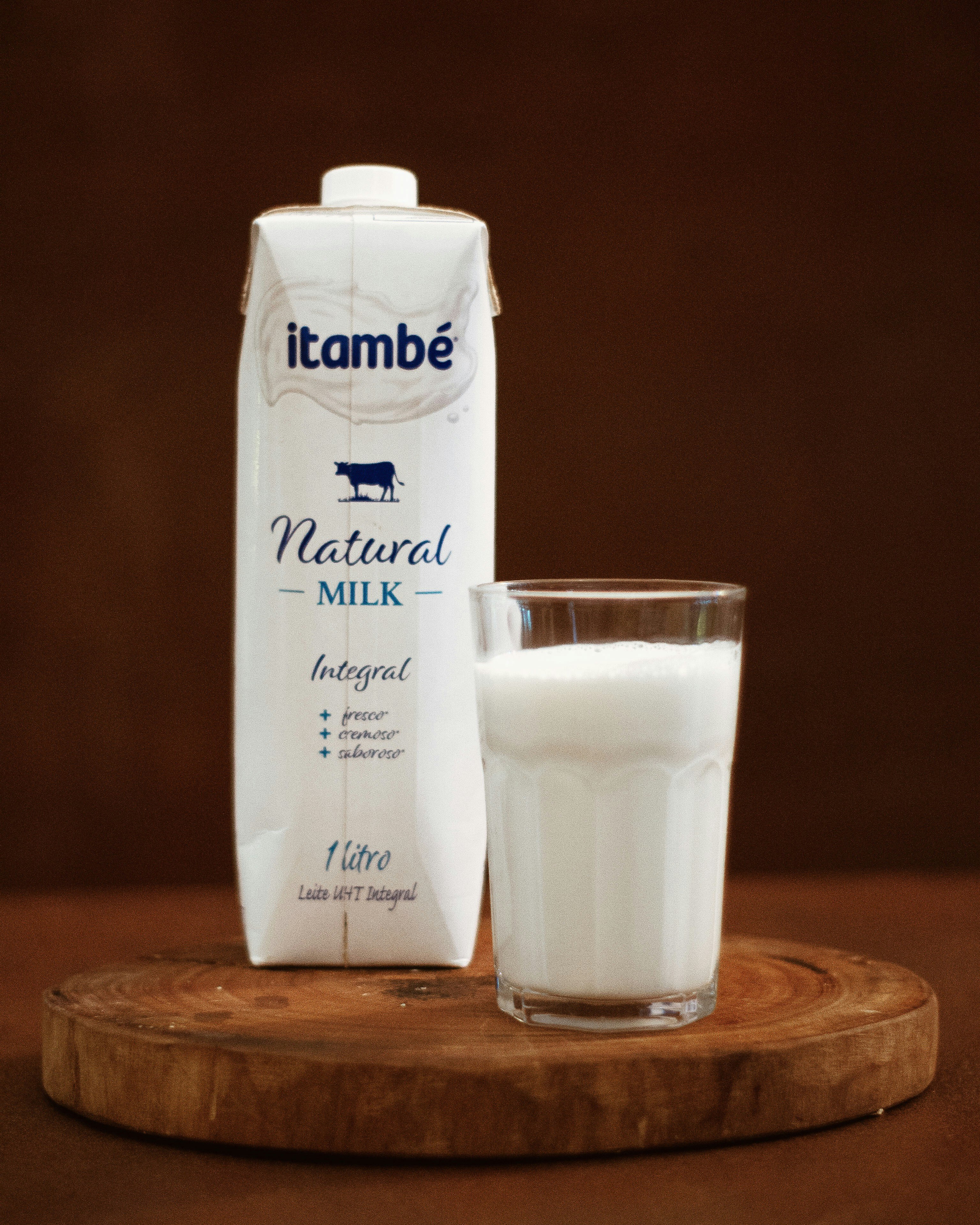The Invisible Architect
How a Tiny Gene Shapes Your Cheese and Milk
Introduction: The Milk Protein Revolution
Walk into any grocery store, and you'll see shelves lined with milk cartons boasting "A2" labels or artisanal cheeses promising superior texture. Behind these claims lies a quiet genetic revolution in dairy cattle breeding. At the heart of this revolution is kappa-casein (CSN3), a milk protein gene whose subtle variations dictate everything from cheese yield to digestive comfort.
Genetic Polymorphism
Single nucleotide changes in the CSN3 gene can dramatically alter milk's properties, making it more suitable for cheesemaking or potentially easier to digest.
Breeding Revolution
While Holstein cows dominate global dairying, their genetic blueprint holds secrets that breeders are now targeting to perfect milk at the molecular level.
This article unravels how a single gene's variants are reshaping the dairy industry—one nucleotide at a time 1 6 .
Key Concepts: The Science of Milk's Molecular Architect
1. The Casein Constellation
Milk proteins are 80% caseins, classified into four types: αS1, αS2, β, and κ. Kappa-casein (CSN3) acts as the "gatekeeper," forming a micelle structure that encapsulates calcium and other proteins. Unlike other caseins, CSN3 stabilizes these micelles and determines how readily they clump together when exposed to rennet—the enzyme used in cheesemaking. This clumping, known as coagulation, is the first step in transforming liquid milk into solid cheese 1 8 .
2. The Genetic Variants That Changed Dairying
The CSN3 gene resides on bovine chromosome 6 and has over 14 known alleles. The two most impactful are:
- A allele: Histidine at position 136/148 (varies by breed)
- B allele: Isoleucine substitution at the same position
This single amino acid swap alters the protein's charge and hydrophobicity. The B variant's structure accelerates micelle aggregation, leading to:
3. Why B Alleles Are a Breeder's Holy Grail
Decades of research correlate B alleles with superior dairy traits:
- Milk composition: Higher κ-casein expression boosts protein content (BB genotypes show 0.2–0.3% more protein than AA).
- Processing efficiency: Cheese factories using BB-milk report 5–10% higher yield per liter.
- Health perceptions: Though less studied than β-casein's A1/A2 divide, emerging data links B alleles to reduced allergenic potential 4 8 .
Casein Protein Structure

The molecular structure of casein proteins showing how they form micelles in milk.
Allele Frequency in Holsteins
Current distribution of CSN3 alleles in global Holstein populations .
The Decisive Experiment: Unlocking κ-Casein's Secrets
A 2024 study (Cappai et al.) tackled a critical question: Do CSN3 genotypes directly influence κ-casein expression levels, or are processing benefits purely structural? This required disentangling genetic regulation from protein function 8 .
Methodology: From Genes to Cheese Vats
Researchers analyzed 805 Holstein cows using:
- Genotyping:
- DNA extracted from ear tissue samples.
- PCR-RFLP with HindIII restriction enzyme to identify CSN3 variants (A, B, E).
- Protein Quantification:
- Western blotting of milk samples to measure κ-casein concentrations.
- Phenotyping:
- Milk samples subjected to standardized rennet coagulation tests.
- Cheese yield calculated as solids recovered per 100L milk.
| Genotype | Frequency (%) | Allele Frequency |
|---|---|---|
| AA | 65.28% | A: 0.81 |
| AB | 31.72% | B: 0.19 |
| BB | 3.00% | E: <0.01 |
Data pooled from global Holstein populations .
Results and Analysis: The B Allele's Dominance
- Protein Expression: BB cows produced significantly more κ-casein (23.8 mg/mL) than AA (18.2 mg/mL) or AB (20.1 mg/mL) (p<0.05) (see Table 2).
- Cheesemaking Performance:
- Coagulation time: BB milk clotted 15 minutes faster than AA.
- Curd firmness: 40% higher in BB genotypes.
- Cheese yield: 6.2% increase versus AA milk.
| Trait | AA | AB | BB |
|---|---|---|---|
| κ-casein (mg/mL) | 18.2 ± 0.9 | 20.1 ± 1.1 | 23.8 ± 1.3 |
| Coagulation time (min) | 45.3 | 38.7 | 30.1 |
| Cheese yield (%) | 8.9 | 9.4 | 10.6 |
Source: CSN3 expression and dairy performance analysis 8 .
Cheese Yield Comparison
Coagulation Time
The Twist: AB heterozygotes showed no difference in A vs. B transcript levels—yet their milk still outperformed AA. This suggests the B allele's benefits arise from both increased expression and superior protein functionality. Regulatory elements in non-coding DNA likely drive the expression differences 8 .
The Scientist's Toolkit: Key Reagents Unlocking CSN3
| Reagent/Method | Role | Example in Action |
|---|---|---|
| PCR-RFLP | Genotype detection | HindIII enzyme cuts B allele DNA differently than A . |
| Illumina EuroGenomics MD chip | High-throughput SNP screening | Scanned 1,777 cows for CSN3 variants in Polish herds 6 . |
| Western Blot | Protein quantification | Measured κ-casein levels using anti-CSN3 antibodies 8 . |
| Rennet Coagulation Test | Functional assessment | Standardized milk clotting analysis for cheesemaking potential 8 . |
The Future of Milk: Breeding for the B Advantage
Despite the B allele's benefits, its frequency in Holsteins remains below 20% . Increasing it requires:
- Genomic selection: Using SNP microarrays (e.g., EuroGenomics MD chips) to screen bulls.
- Strategic mating: Crossing AB sires with AB dams to boost BB offspring.
- Conservation of diversity: Local breeds like Polish Red cattle harbor high B frequencies (35%), offering valuable genetic reservoirs 6 .
"Selecting for CSN3 B isn't just about better cheese—it's about reinventing milk as a sustainable, functional food."
Global "A2 milk" markets have already demonstrated consumer willingness to pay premiums for genetically tailored dairy. The next frontier is B-enriched milk: combining the digestibility of A2 β-casein with the superior processing of κ-casein B 6 8 .

Artisanal Cheese Benefits
Cheesemakers report significantly improved texture and yield when using milk from BB genotype cows, allowing for more consistent quality in artisanal products.

Sustainable Dairy Farming
Higher cheese yields mean less milk is needed for the same amount of product, potentially reducing the environmental footprint of dairy production.
Conclusion: The Silent Gene Shaping Your Dairy Aisle
The story of κ-casein is a testament to how single genes can redefine entire industries. From artisanal creameries to industrial cheesemakers, the shift toward B-allele breeding programs underscores a profound truth: In the age of genomics, milk is no longer a mere commodity—it's a designable biological system. As research unlocks regulatory mechanisms behind CSN3 expression, we edge closer to "programming" cattle for a future where every drop of milk is optimized for nutrition, sustainability, and taste. For dairy farmers and cheese lovers alike, the κ-casein revolution is just beginning 4 8 .
This article was generated from scientific research using AI-assisted synthesis. Key sources are cited in brackets [citation:#]. For complete study details, refer to the original publications.